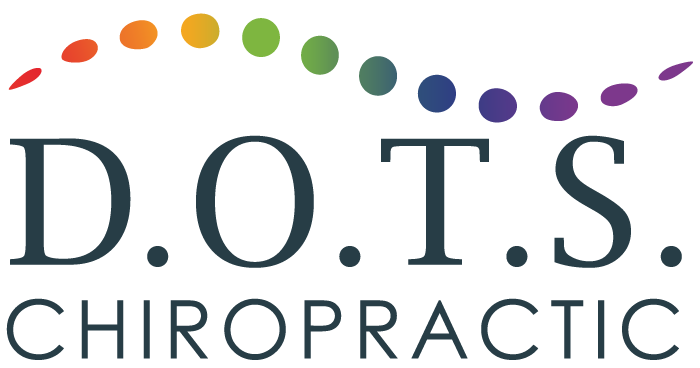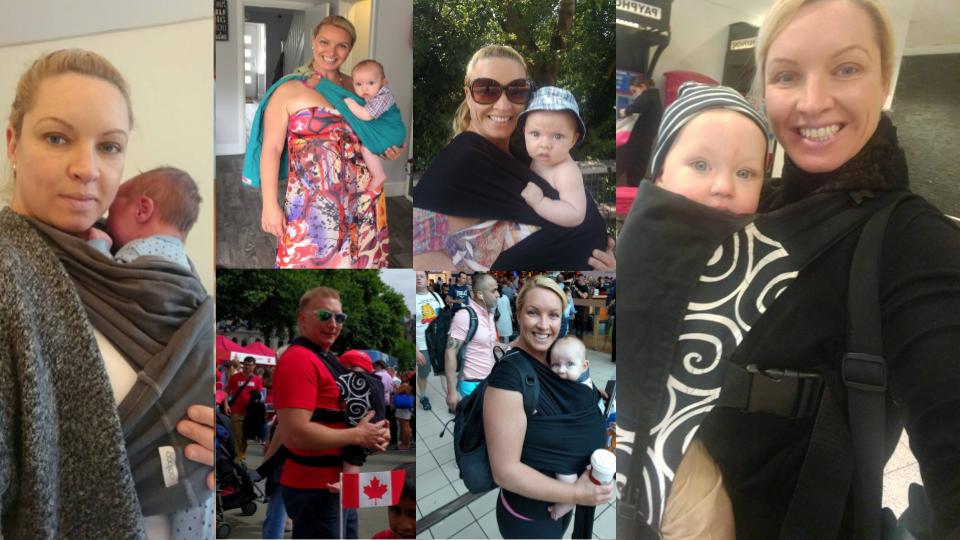New babies depend on their parents for everything. We are responsible for feeding them, changing them, comforting them, and playing with them, which all provide stimulation so that their brain can grow and develop optimally. Baby wearing is a way to stay close to your baby so that they can gain the benefits of close contact (skin to skin), while allowing you to move around and be hands-free. Maintaining close contact with an infant helps to regulate their breathing, heart rate, oxygen levels and temperature. This is very important, especially when a baby is very young and has an immature system (1).
A baby’s brain develops from right to left, and the first two years are the most important for the right sided development. Babies brains grow to become sturdy with appropriate input and interaction between themselves and their parents. Responding to cues (facial expressions, babbles, needs of the baby) helps to strengthen the bond and grow the brain. This is more easily achieved with close contact, which baby wearing allows you to do (2).
Close contact between mother and baby, especially in the early days, helps to establish a good milk supply and can help to facilitate easier breastfeeding. In one study, mothers who wore their baby for at least an hour a day during the first month of life were twice as likely to still be breastfeeding at five months (3) (4).
Optimal development is always important, so the way a baby is positioned in the sling or carrier, is also important. A newborn is completely flexed, so supporting the spine is essential, until he develops the musculature to do so himself. The pelvis and hips aren’t fully ossified when born, so maintaining a good positioning of the hips is crucial to development. This can be achieved by making sure your baby is positioned in an ‘M’ shape, meaning that their knees are higher than their bum and their legs are spread apart.
The guidelines for safe baby wearing can be remembered by using the acronym T.I.C.K.S. (5)
Tight – tight enough to hug your baby close to you
In view at all times – you should always be able to see your baby’s face
Close enough to kiss – your baby’s head should be as close to your chin as is comfortable
Keep chin off chest – ensure there is always room between your baby’s chin and their chest to allow for a proper airway
Supported back – your baby should be supported so that their tummy and chest are against you
We wore our son home from the hospital, and have been big baby wearing supporters throughout our parenting journey. It has made travelling so much easier – from moving countries and checking in at the airport to navigating the London underground and even to going to the shops and having to use the restroom with the baby! Dylan has napped in a sling, he has nursed in a sling, he has danced in a sling, and generally finds it comfortable, snuggly and secure. I liked the idea of carrying my son around and being near him throughout the day, and yet I was still able to do normal household tasks, make a cup of tea and go for a walk. I was/am quite minimalist when it comes to purchasing baby stuff, however; we do have 5 slings (a moby, a close caboo, a connecta, a woven, and a ring sling). After eighteen months, we are still carrying Dylan occasionally, although he prefers to walk most of the time now. When you visit the office you are free to try on and borrow our slings — although I am involved with the sling library and can recommend some baby wearing consultants who will have more specialized knowledge.
(1) https://midwiferytoday.com/mt-articles/kangaroo-care-work/
(2) https://developingchild.harvard.edu/resources/inbrief-science-of-ecd/
(3) https://www.ncbi.nlm.nih.gov/pubmed/22734604
(4) https://www.ncbi.nlm.nih.gov/pubmed/30200623
(5) http://www.schoolofbabywearing.com/Images/TICKS.pdf


